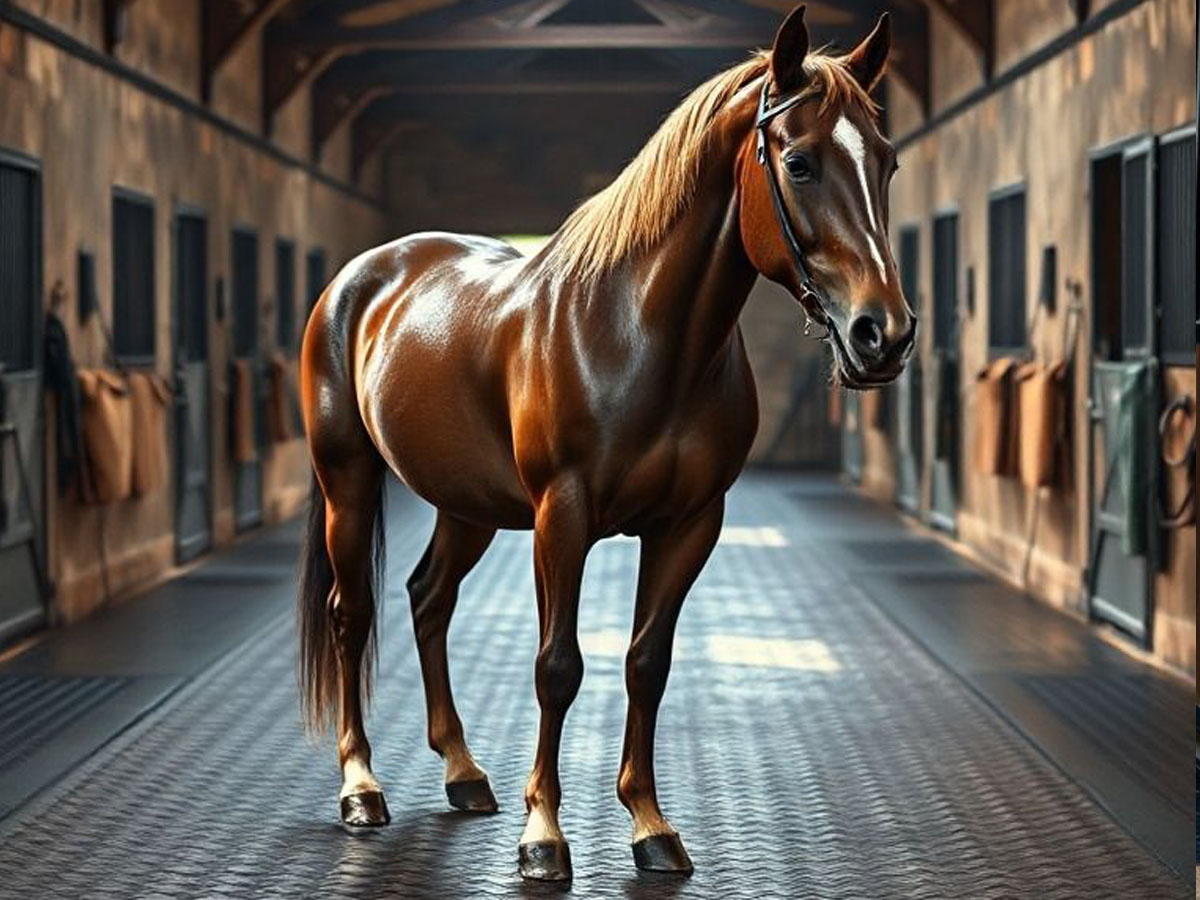
Horse stable mats are an essential component of any well-maintained barn, providing comfort and safety for your horses while also helping to protect the underlying flooring. However, to maximize their benefits, it’s crucial to keep these mats clean and in good condition. Here’s a comprehensive guide on how to maintain and clean your horse stable mats efficiently, ensuring a healthy environment for your horses.
1. Initial Setup for Longevity
- Proper Installation: Ensure your horse stable mats are installed correctly from the start. This includes leveling the base, ensuring proper drainage, and securing mats to prevent movement.
- Mat Selection: Choose mats designed for horse stables, which are typically made from durable rubber or synthetic materials that resist wear and tear.
2. Daily Cleaning Routine
- Quick Sweep: Start each day with a quick sweep or dry mop to remove loose debris. This not only cleans but also helps in spotting any immediate issues like tears or loose edges.
- Spot Cleaning: Immediately remove manure and wet bedding. For horse stable mats, using a flat shovel or scraper can help lift debris without damaging the mat surface.
3. Weekly Maintenance
- Deep Cleaning: Use a pressure washer on a low setting for mats that can handle it. This helps in removing embedded dirt and refreshing the mat’s surface. Always ensure the mats are completely dry before horses return to prevent slipping.
- Disinfecting: Mix a mild disinfectant with water and scrub the mats. For eco-friendly options, consider using vinegar or hydrogen peroxide, which are effective against bacteria and safe for horses.
4. Seasonal Care
- Rotation: If possible, rotate your horse stable mats seasonally. This ensures even wear across all mats, extending their overall lifespan.
- Inspection: At least twice a year, thoroughly inspect each mat for wear, tears, or any signs of mold. Address any issues promptly to prevent further damage.
5. Special Treatments for Horse Stable Mats
- Sealing: Some mats can benefit from a rubber sealant or protectorant. This can help in maintaining the mat’s flexibility and resistance to urine and moisture.
- Mending: For small tears or punctures, use a rubber patch kit designed for horse stable mats. This not only fixes the issue but also prevents further tearing.
6. Preventive Measures
- Footbaths: Place footbaths at stable entrances to minimize the dirt and bacteria brought in by horses and humans, which can degrade the mats over time.
- Bedding Management: Use absorbent bedding materials and manage them well to reduce the amount of moisture that reaches the mats, thus preserving their condition.
7. Eco-Friendly Practices
- Natural Cleaners: Opt for natural cleaning agents like baking soda for deodorizing or diatomaceous earth for absorbing moisture and odors.
- Composting: Utilize manure and soiled bedding for composting, reducing waste and potentially creating a resource for your property.
8. Health and Safety
- Non-Slip Additives: If mats become slippery over time, consider applying non-slip additives or mats designed to be placed over existing flooring for added safety.
- Ventilation: Ensure your stable has adequate ventilation. Good air flow helps in drying out any moisture on the mats, reducing the risk of mold and ammonia buildup.
9. Professional Maintenance
- Annual Check-Up: Have a professional evaluate your horse stable mats annually. They can provide insights into wear patterns, suggest maintenance practices, or recommend replacements if necessary.
By following these tailored tips for maintaining and cleaning your horse stable mats, you not only ensure a clean and safe environment for your horses but also significantly extend the life of your flooring investment. Remember, the key to longevity in stable flooring, especially with mats, is regular care and proactive maintenance.
